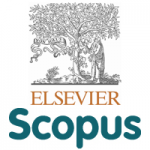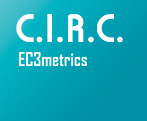Hablemos de ángeles calvos, demonios pelones y figuras grotescas en la escultura barroca gallega
Resumen
ABSTRACT: The unusual bald angels depicted in the interior of the sounding board of the pulpit on the Gospel side of the Monastery of San Martiño Pinario in Santiago de Compostela are the starting point to undertake an iconographical study of the representation of demons in Galician Baroque sculpture, primarily in that found in Santiago de Compostela. In this analysis I go beyond the mere identification of its characteristic attributes in order to try to reconstruct the contents that they could communicate within their cultural context. In order to do so, I turn to sources derived from sacred and profane literature, as well as to Neostoicism as the prevailing trend in Spanish Catholicism of the Counter-Reformation. Finally, considering the fact that we are dealing with works of art whose form must therefore also be interrogated as a possible transmitter of emphatic contents, instead of analyzing them only as simple products of Baroque style, I stress their stylistic mode, especially, the grotesque one that was used in the majority of the examples. Furthermore, the accumulation of new meanings gleaned as a result of the mode´s analysis allows me to interpret important works of sculpture, such as two of the reliefs of Pinario’s main altarpiece: the Miracles of the Child and of the Pine Tree, from a distinctive and more enriching perspective, such as
KEYWORDS: Iconography, Angels, Demons, Stylistic Mode, Neostoicism
RESUMEN: La inusual representación de unos ángeles calvos en el interior del tornavoz del púlpito de evangelio del monasterio compostelano de San Martiño Pinario es el punto de partida para un estudio iconográfico de la representación del demonio en la escultura barroca gallega y, fundamentalmente, en la compostelana. En nuestro análisis no nos quedamos en el mero reconocimiento de los atributos que lo caracterizan, sino que, además, tratamos de reconstruir los contenidos que estos podían trasmitir en su contexto cultural, para lo cual acudimos a fuentes de literatura sacra y profana y al neoestoicismo como corriente preponderante en el catolicismo español postridentino. Finalmente, teniendo en cuenta que estamos ante obras de arte y que, por consiguiente, su forma también debe ser interrogada como posible trasmisora de contenidos enfáticos, en vez de analizarlas solo como obras de estilo barroco, hacemos hincapié en su modo estilístico, y particularmente, en el grotesco, en el que, en su mayoría, fueron plasmadas. Este incremento de significados a través del análisis del modo nos permite, además, interpretar con una perspectiva distinta y más enriquecedora obras importantes en dicha escultura como son los relieves de los milagros del niño y del pino del retablo mayor de Pinario.
PALABRAS CLAVES: Iconografía, Ángeles, Demonios, Modo estilístico, Neoestoicismo.Palabras clave
Texto completo:
PDFEnlaces refback
- No hay ningún enlace refback.
URL: http://ojs.uv.es/index.php/IMAGO
Administración: C/ Universitat, 2 · 46003 Valencia.
M.Elvira.Mocholi@uv.es, Elena.Monzon@uv.es, mahiques@uv.es
ISSN digital: 2254-9633 / ISSN impresión: 2171-0147
MÉTRICA EN SJR BASADA EN SCOPUS
INDEXACIÓN






![]()







